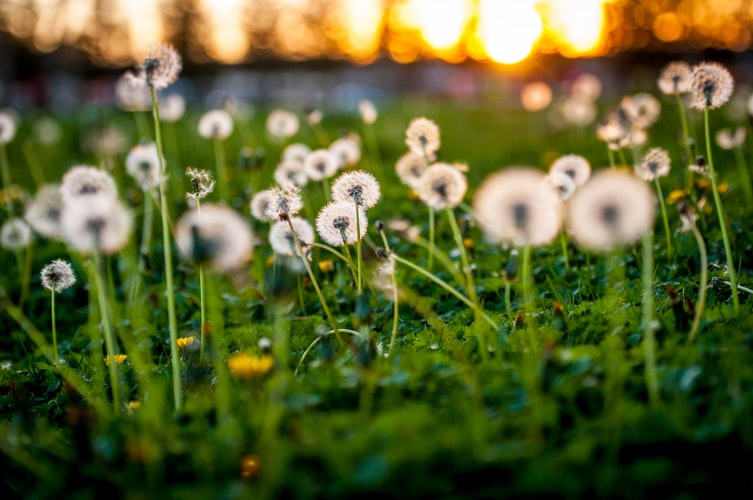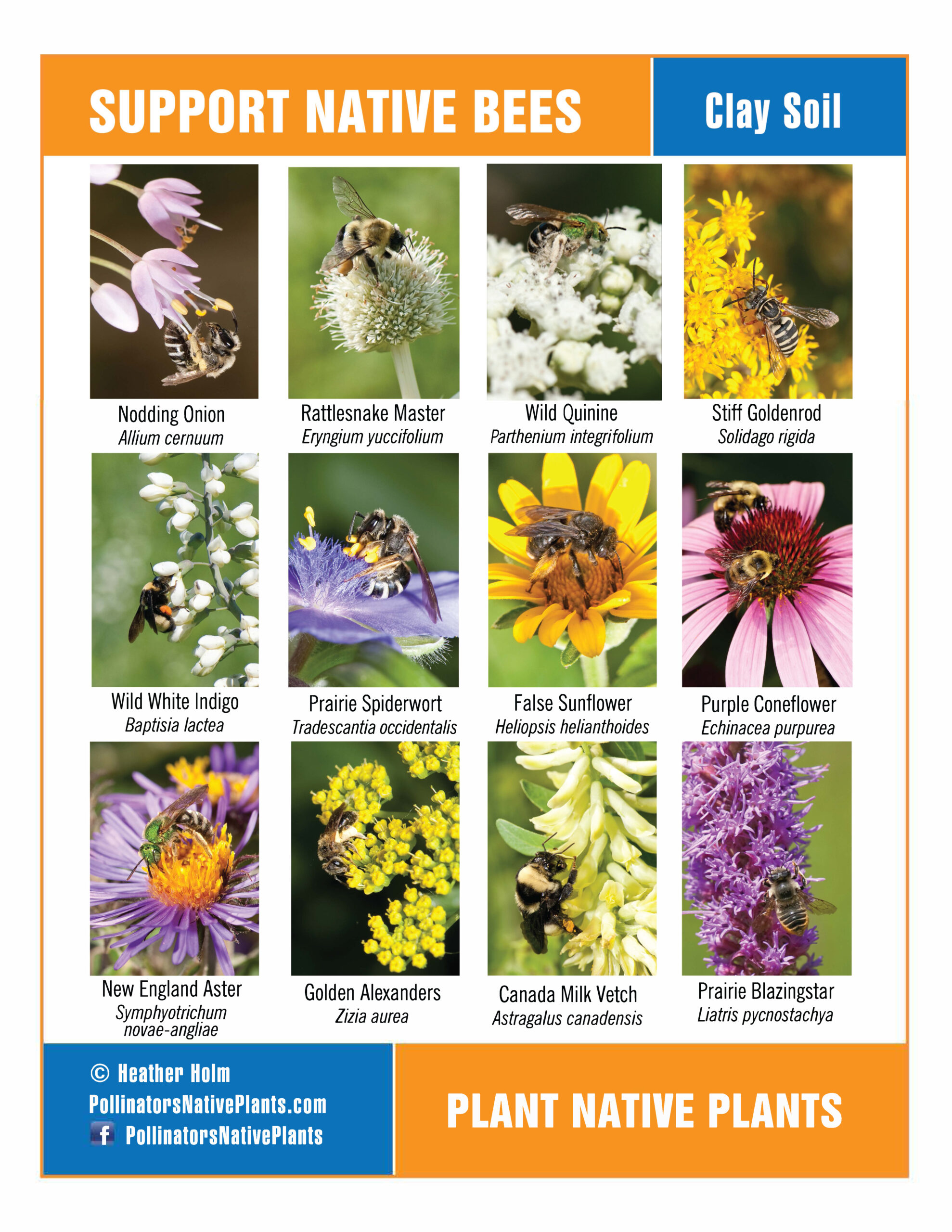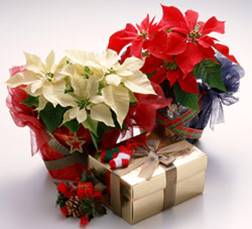
Every spring there are posts by well-meaning people across Ontario about how great dandelions are for bees. But the truth is that dandelions are not all that bee-friendly for our native bees. Here’s the Good, the Bad, and the Ugly about dandelions in our Ontario gardens.
The Good –Yes, there are some positives, with important “but’s” attached…
- Dandelions (Taraxacum officinale) are edible and are said to have medicinal properties. BUT there are lots of native plants with these properties.
- You may have fond memories of making dandelion necklaces and it is fun to blow the seeds away and make a wish. BUT you can also blow away seeds of native milkweed and make necklaces with other flowers.
- Some birds may use the dandelion fluff for nesting material,. BUT there are a lot of other fluffy alternatives, e.g. native poplars, and willows, so it’s not really needed.
- Dandelion flowers do attract and feed some bees. BUT more than likely they are non-native honey bees.
- The celebration of dandelions in lawns may spring from a backlash against the use of herbicides in lawns and that is good- (herbicide use is still common in the U.S.) BUT here in Ontario, the Ontario Cosmetic Pesticide Act of 2009 has long banned such spraying, so there is really no need to celebrate dandelions.
The Bad –Dandelions are not really bee-friendly ..and other reasons they’re not cool
- Dandelions are a non-native species in Canada and much of the U.S. They crowd out native plants and are easily dispersed to other people’s gardens by their fluffy seeds.
- Dandelions are very difficult to eliminate from lawns and gardens due to their long taproot.
- Dandelions take up “real estate” in lawns and gardens that could be better served by planting native plants that actually do more to support native bees. Roughly 25% of native bees are pollen specialists and can only exist on the pollen of a specific genus or variety of plant, e.g. the Evening Primrose Sweat Bee (Lasioglossum oenotherae) feeds exclusively on evening primrose (Oenothera biennis). (5,6)
- Dandelions are pretty well the poster child for what we think of as “weeds”. Our own Ministry of Agriculture and Rural Affairs lists dandelion as a weed.
- Dandelions make a lawn look “weedy” and are likely the major reason homeowners turn to chemicals for weed management, e.g. chelated iron in products like Weed-B-Gone. These chemicals run off and pollute our watersheds. Even worse, frustrated gardeners may ignore the Ontario Cosmetic Pesticide Act to try and eliminate dandelions in their lawn using non-approved herbicides.
- Dandelions give the movement towards native gardens a bad name as people mistakenly believe native gardens look weedy or neglected.
The Ugly –False & Misleading information – Dandelions are not all that bee-friendly!
- “We are feeding the bees!” Dandelions didn’t exist in Ontario before Europeans, so why are they seen as necessary for native bees? In fact, dandelion pollen is not the best food for native bees. “When dandelion pollen was fed to solitary bees larval development was stunted or incomplete. Studies indicated that dandelion pollen was short in essential amino acids (although exact details were not given). I could not find a single study that indicated anything other than dandelions do not have a very good protein and amino acid content. Just because dandelions are not the best protein sources for honeybees does not mean they are not valuable. Most experts feel that honeybees do better when they gather pollen from different sources, much like humans do better when we eat a wide variety of foods.”(1)
- “Dandelions are the bees’ first food” Nonsense! In our Ontario gardens, many plants bloom long before dandelions show their yellow faces, e.g. native elms, willows, poplars, maples, redbuds, serviceberries, and fruit trees such as pears, apples, and cherries. And each of these trees can have thousands of flowers due to their size, so are a great source of pollen. There is also a long list of spring flowers that bloom before dandelions, e.g. snowdrops, crocus, hyacinths, hellebores, violets, Virginia bluebells, and bloodroot. (2)
- “No bees, no food crops for us and we all starve.” The vast majority of pollination comes from native wild bees and insects, e.g. solitary bees, bumblebees, flies, and wasps. pollinators. Since dandelions don’t really support our native bees, there is no reason to plant them or deliberately encourage them to propagate in your yard. (7)
- Dandelion promotion seems to go hand in hand with honey bee promotion. Honey bees actually can destabilize natural ecosystems by competing with native bees. (2) While honey bees get attention in the press and media when there is talk of supporting bees, they are actually a threat to our native bees, many of which are species at risk. I recognize the importance of honey bees and the production of honey and pollination services beekeepers offer in agriculture. But we need to recognize the negative impacts as well. (3)
If you truly want to support bees and native pollinators, plant native plants. Here’s a poster with some great choices for clay soil and sun. Check out Heather Holms’s free posters (Shade, Loam, sand etc

Now you know dandelions are not all that bee-friendly. Check out these BEE Resources!
- 1 The Real Scoop on Dandelions and Honeybees
- 2 Garden Myths – Are Dandelions Really Important to Bees?
- 3 Scientific American – The Problem with Honey Bees
- 4 National Environmental Treasure – The Buzz on Native Bees – an underdog in pollination and ecosystems
- 5 Primrose-Sweat bee
- 6 Pollen Specialist Bees of the Eastern United States
- 7 List of crop plants pollinated by bees
- 8 Heather Holm posters of native plants for bees – awesome lists and images for bees, wasps, pollinators
Author – Claudette Sims, Master Gardener, MGOI Facebook Group
EDITOR’S NOTE
This post was published with an Ontario audience in mind. Other regions may have different circumstances in terms of what blooms when to support native bees. This Saskatchewan Viewpoint offers the reader a summary of some thoughtful input from Yens Pedersen, bee educator and advocate, Regina District Bee Club, Saskatchewan.
Related posts about dealing with Dandelions and other weeds
http://8ff.ad6.myftpupload.com/gardening-with-fewer-chemicals-ipm/





About The Author: Claudette Sims
Claudette is a retired educator, passionate gardener, and longtime member of Halton Region Master Gardeners. She loves to attract wildlife to her garden and her increasing knowledge has led to admiration for our beautiful native plants and butterfly host plants. You may also hear Claudette on CBC Radio's award-winning live garden chat.
More posts by Claudette Sims